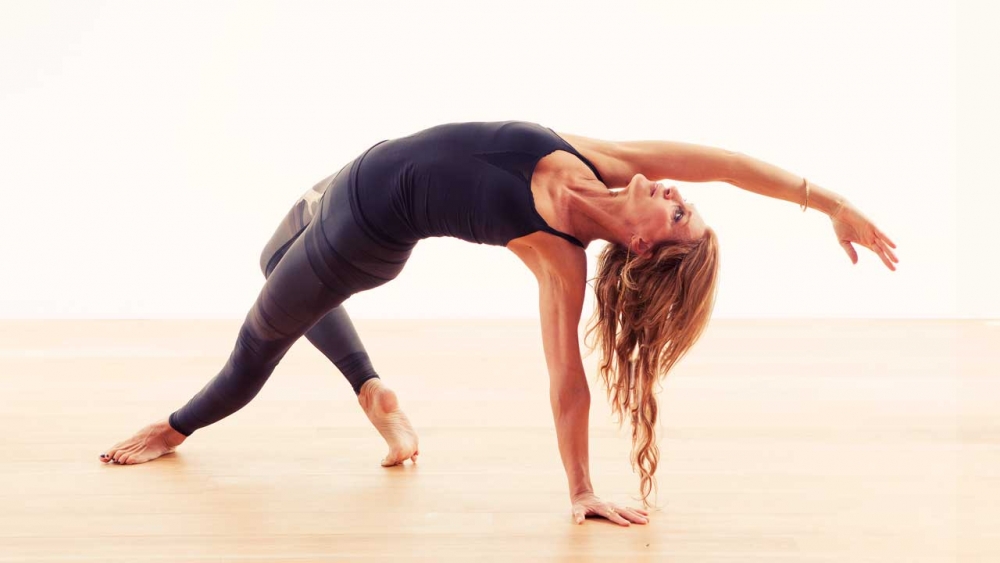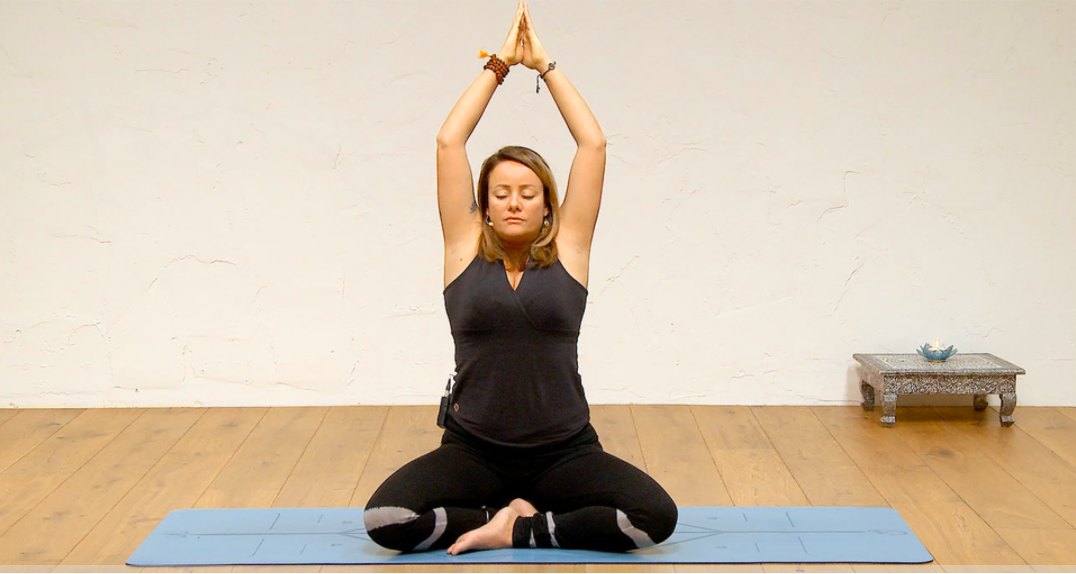The heart chakra is situated in the centre of the chest at the height of the thymus gland (behind the sternum). In Sanskrit this chakra is called Anahata, meaning ‘infinite’, ‘unhurt’ or ‘boundless’. The heart is the bridge between the lower triangle (the root, sacral and solar plexus chakras) and the upper triangle (throat, third eye and crown chakras).
Anahata: open your heart
Element:
The element associated with Anahata chakra is Air. It’s all about space, feeling the infinite, like the sky. It’s the door to our inner temple, our soul, the infinite part of ourselves. It’s where we transcend ourselves and the world.
Physical Body:
Heart, lungs, arms and hands, thymus.
Emotional Body:
The heart chakra is related to being able to love yourself. Being able to give and receive (love) with equal ease. Feeling kindness and compassion for yourself and others. Having a sense of ‘we’ instead of only ‘I’. Feeling a general sense of belonging and trusting in your heart as an inner compass.
Mental Body:
I can give and share, without expecting anything in return. I am blessed with abundance and I know when to say ‘no’ and nurture myself. I can accept things as they are and I live in balance, within myself and with the world around me.
Imbalances
As we’ve learned in previous chakra articles (see below), because of stress in any layer of the body (physical, mental, emotional and energetic) you can slow down, stagnate or completely go into overdrive.
An imbalance of the heart chakra can be experienced as loneliness and separation, feeling like you don’t belong or fit in, feeling disconnected. If you have grown up in an unloving environment or have been in an unloving relationship for a while, you may develop the sense that you’re not worthy of love. This could manifest itself as cold-heartedness towards yourself and/or others. At the other end of the scale it could develop into an overactive people-pleasing attitude, willing to do anything for anyone for some attention or approval.
Another imbalance often found in this chakra is resentment. When someone really hurts you, it hits you in the heart. If you cannot let go and forgive, you’re left with this weight on your heart that seems to be always present (a heavy heart). Sometimes we want to let go mentally, but emotionally we don’t seem to be able to shake the negative feelings, attitudes and habits.
Checklist for the fourth chakra
- Can you really give and receive with equal ease and grace?
- Do you have a sense of space in the heart centre?
- Do you feel a sense of gratitude?
- Can you sense a deeper connection between all living beings and the earth?
- Are you able to express your boundaries in a loving way?
- Are you in touch with your inner child?
- Can you recognise the other person as you; feel kindness and compassion even if you disagree?
- Can you forgive yourself and others?
Coming into balance
There are things you can do on and off the mat to balance this chakra:
Yoga poses for Anahata chakra:
I find that the most effective way to balance your energy centres is to do targeted yoga poses such as:
- Ustrasana (camel pose)
- Bhujangasana (cobra pose)
- Spinal flex with hands on the knees
- Heart openers (yin)
- Camatkarasana (Wild Thing)
Suggestions for meditations for Anahata chakra:
Green is the colour for this chakra, so use it in during your relaxation or meditation.
Sing mantras or sound vibrations. HUM is the Kundalini bija mantra. Chanting HUM like you would OM, but more continuously, works on the same vibrational frequency. Or work with the breath – breathe in and vibrate the sound SO and breathe out vibrating the sound HUM. This mantra is very powerful and means I AM THAT. It points to the ultimate reality that all is one. You could also chant or recite ONG SOHUNG from the Kundalini, which means the same thing.
Mudra for fourth chakra: Padma Mudra (Lotus Mudra): take an easy cross-legged position and sit up tall. Bring your hands to the height of your heart, Now touch the fingertips and bases of both hands together, and leave space in between the palms; your fingers look like an open lotus flower. Meditate on the space inside of you, visualize yourself as completely empty and open, as if the wind could just blow through you. Not holding on to anything, not having to hold any shape or form.
Air and Space are qualities of the heart chakra. They are the way to discover the infinite within, but we must move beyond our illusions of boundaries and limitations in every sense of the word – physical, mental, emotional and spiritual. Working on the physical heart space through asana is a beautiful step to help open the heart on all these levels. When we work on the body, tightness and stagnation present in the body will come to the surface automatically. If we can find the patience and the wisdom to just sit with it, watch it without judgment and understand the deeper lessons, meanings and connections of all that arises and then consciously let it go, it is a priceless gift of freedom.
Lokah samastah sukhino bhavantu! (may all beings be happy and free).
Marlene.
Practice with Marlene:
This very peaceful set is designed to strengthen and harmonise the heart center (Anahata chakra). Allow yourself to create space in the heart so it can be open and strong. Experience the essence of the heart qualities and enjoy!
Read more about the Chakras
- Introduction to the chakras
- Muladhara or Root Chakra
- Svadhisthana or Sacral Chakra
- Manipura or Solar Plexus Chakra
- Anahata or Heart Chakra
- Vishuddha or Throat Chakra
- Anja or Third Eye Chakra


